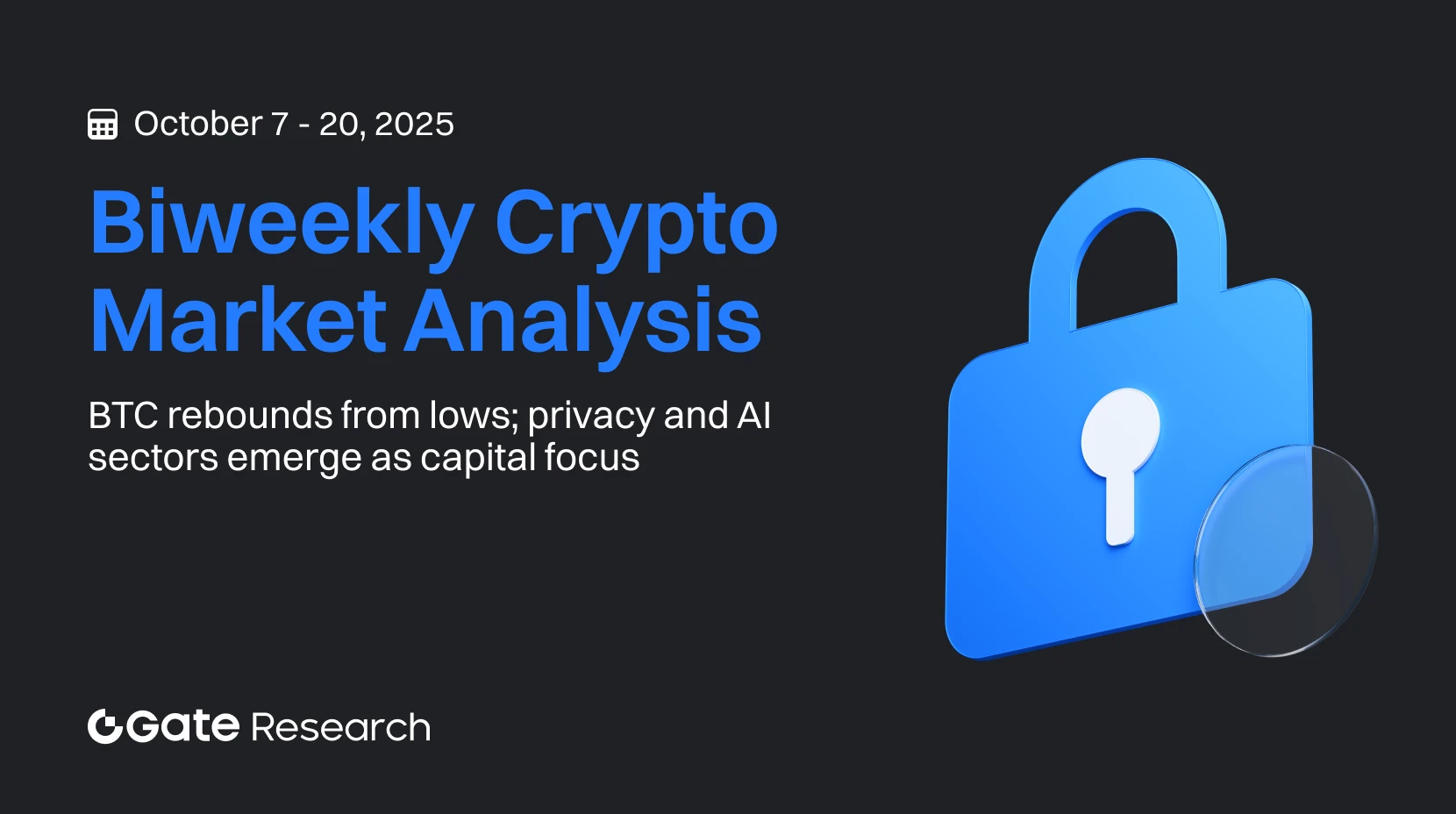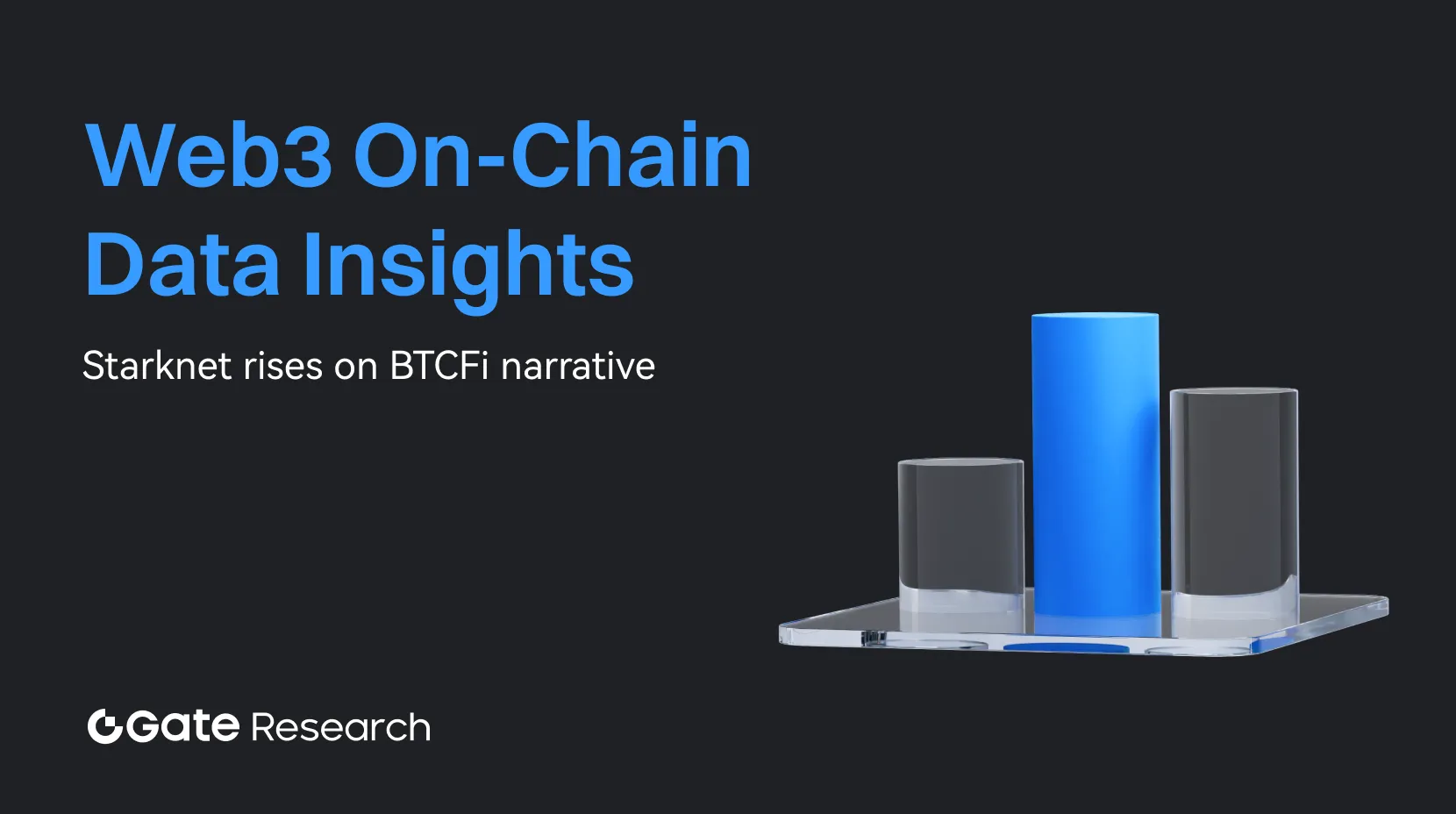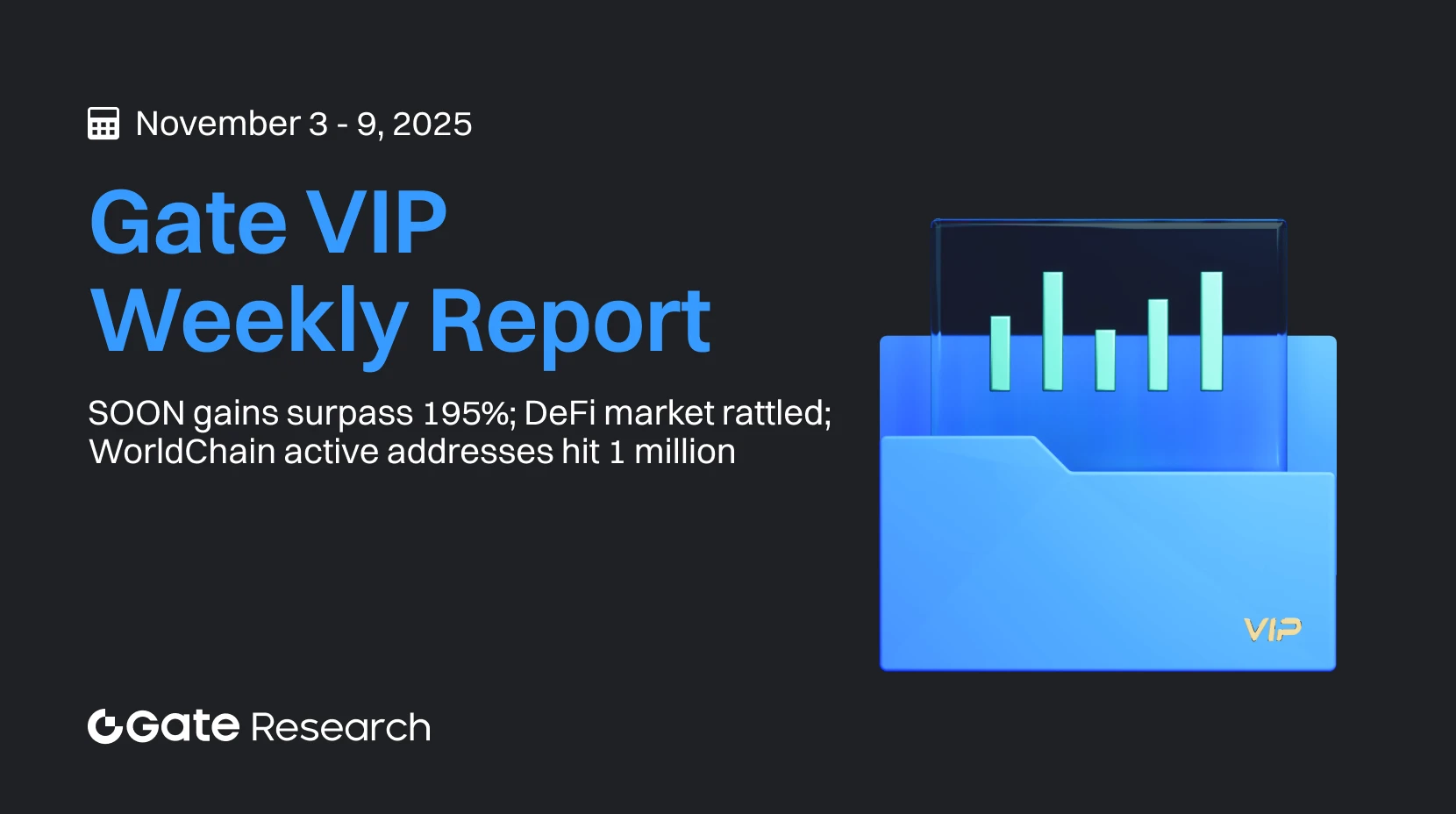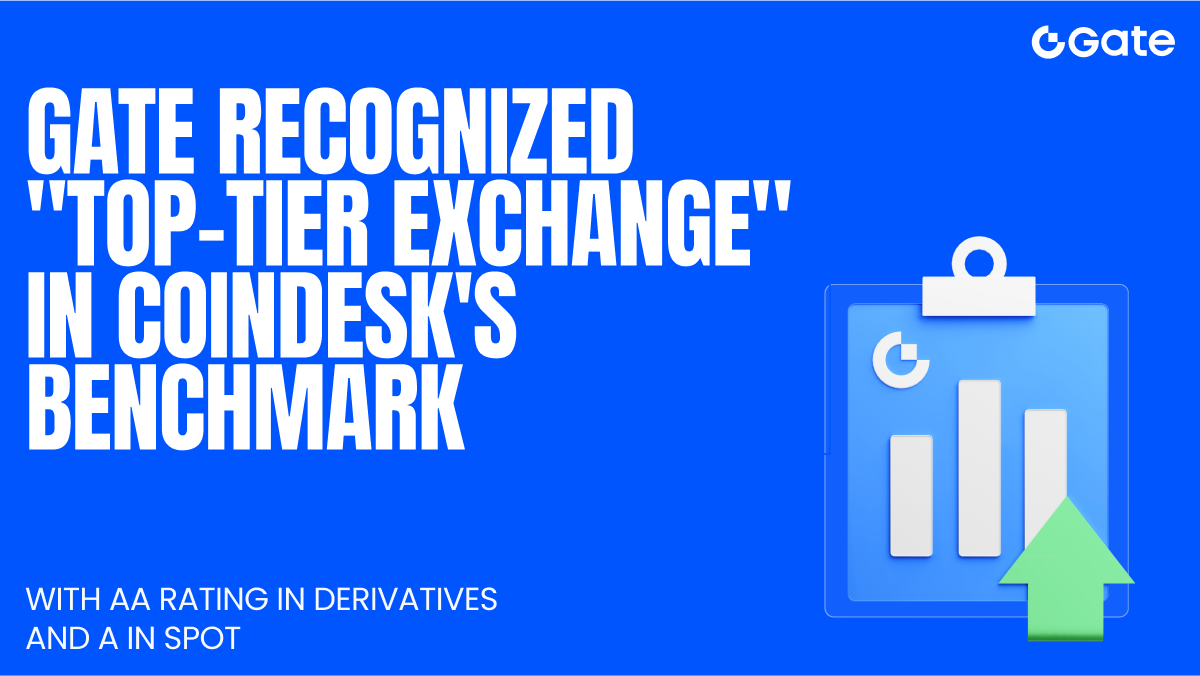Gateway to Learning
Want to invest in crypto but don't know where to start?
Learn crypto through the simplest words.
 Must Read Daily Market Reports
Must Read Daily Market Reports
Must Read Daily Market Reports
 Gate Research: Oracle Sector Deep Dive: Ecosystem Expansion, Economic Value Capture, and the Financial Bridge
Gate Research: Oracle Sector Deep Dive: Ecosystem Expansion, Economic Value Capture, and the Financial Bridge
Gate Research: Oracle Sector Deep Dive: Ecosystem Expansion, Economic Value Capture, and the Financial Bridge
 Gate Research: BTC Rebounds from Lows as Mid- and Small-Cap Narratives Heat Up — Privacy and AI Sectors Emerge as Capital Focus
Gate Research: BTC Rebounds from Lows as Mid- and Small-Cap Narratives Heat Up — Privacy and AI Sectors Emerge as Capital Focus
Gate Research: BTC Rebounds from Lows as Mid- and Small-Cap Narratives Heat Up — Privacy and AI Sectors Emerge as Capital Focus
 Gate Research: BTC Rebounds from Lows | Monad Mainnet to Launch on November 24
Gate Research: BTC Rebounds from Lows | Monad Mainnet to Launch on November 24
Gate Research: BTC Rebounds from Lows | Monad Mainnet to Launch on November 24
 Gate Research: Starknet Rises on BTCFi Narrative, Polymarket Leads a New Chapter in On-Chain Prediction Markets|Web3 On-Chain Data Insights for October 2025
Gate Research: Starknet Rises on BTCFi Narrative, Polymarket Leads a New Chapter in On-Chain Prediction Markets|Web3 On-Chain Data Insights for October 2025
Gate Research: Starknet Rises on BTCFi Narrative, Polymarket Leads a New Chapter in On-Chain Prediction Markets|Web3 On-Chain Data Insights for October 2025
Featured Courses
More
Advanced
Tools That Help You Trade Better: Moving Averages, Trend Lines, and Indicators
There are no trading rules that are applicable to any scenario. These courses will help you establish your own trading strategy, then test it and improve on it in practice

Intermediate
Technical analysis: A useful tool to understand trends in Futures trading
Understand candlestick patterns and recognize market trends. Build a technical analysis system to make informed trading decisions

Intermediate
AI Agents Deep Dives: Artificial Superintelligence Alliance (ASI)
This course provides an in-depth exploration of the Artificial Superintelligence Alliance (ASI), a collaborative initiative led by Fetch.ai, SingularityNET, Ocean Protocol, and CUDOS. It covers ASI's decentralized infrastructure, tokenomics, governance, and ecosystem, offering participants a comprehensive understanding of how the alliance advances decentralized Artificial General Intelligence (AGI). By the end of this course, learners will gain practical insights into AI ownership, secure data-sharing models, and decentralized cloud computing, preparing them to engage with the future of AI innovation.
Learn by Topic
Topics
Altcoins
Bitcoin
Blockchain
DeFi
Ethereum
Metaverse
NFTs
Trading
Tutorial
Futures
Trading Bots
BRC-20
GameFi
DAO
Macro Trends
Wallets
Inscription
Technology
Meme
AI
SocialFi
DePin
StableCoin
Liquid Staking
Finance
RWA
Modular Blockchains
Zero-Knowledge Proof
Restaking
Crypto Tools
Airdrop
Gate Products
Security
Project Analysis
CryptoPulse
Research
TON Ecosystem
Layer 2
Solana
Payments
Mining
Hot Topics
P2P
Sui Ecosystem
Chain Abstraction
Options
Quick Reads
Video
Daily Report
Market Forecast
Trading Bots
VIP Weekly Industry Report
ETF Leveraged Tokens
Top Stories
XRP
Pi Network
VIP Daily Industry Report
In-Depth Research
Gate Ventures
Weekly Report
Investment News
Perpetual DEX
Web3 For Beginners
Tron
Base
Protocols
Dapp
Crypto Card
BNB Chain
Difficulty
Beginner
Intermediate
Advanced
Latest Courses
More
Intermediate
Introduction to Aethir
Aethir offers decentralized GPU cloud infrastructure built to support AI, gaming, and compute-intensive applications. This course provides a comprehensive breakdown of Aethir's architecture, token economy, governance structure, and operational features. Learners will gain the necessary understanding to evaluate how decentralized computing models are structured and maintained using token-based incentives and distributed validation.

Intermediate
Introduction to Celestia and Modular Blockchain Design
This course provides a comprehensive introduction to Celestia, the first modular blockchain network focused exclusively on data availability and consensus. Learners will explore the shift from monolithic to modular architectures, understand the inner workings of Celestia, and examine its real-world applications.

Intermediate
Trading and Investment Strategies
Welcome to Trading and Investment Strategies, a critical step in your journey of learning crypto investing. In this course, you will learn how to establish effective trading and investment strategies, understand the risks and opportunities in the crypto market, and master the core methods for managing investment portfolios. From risk control and position sizing to trading psychology and market rhythm, this course will guide you to shift from "speculating" to "strategically investing."
Latest Articles
More
Advanced
 Gate Research: SOON Weekly Gains Surpass 195%; DeFi Market Rattled; WorldChain Active Addresses Hit 1 Million | Weekly Report for Gate VIPs
Gate Research: SOON Weekly Gains Surpass 195%; DeFi Market Rattled; WorldChain Active Addresses Hit 1 Million | Weekly Report for Gate VIPs
Last week, the crypto market came under pressure from both government shutdown concerns and DeFi security incidents. Mainstream coins continued to decline, while only a few altcoins bucked the trend and posted gains. SOON surged over 195.63% last week, emerging as the standout token. WorldChain saw significant increases in activity and capital inflows, becoming a highlight in multi-chain rotation. Regulators are actively promoting the launch of leveraged spot crypto products, which could go live as early as the end of the year. Gate has rolled out a decentralized Web3 Launchpad, pushing token issuance toward fully on-chain deployment.
11/11/2025, 10:22:10 AM

Advanced
Gate Research: Ethereum Foundation Releases 2026 Roadmap | Balancer Encourages LPs to Migrate Liquidity to v3
Gate Research Daily Report: Bitcoin rebounded from the $100,000 support level, forming a bullish trendline around $104,000. Ethereum stabilized and bounced back from the $3,200 zone after experiencing a major liquidity shock. A centralized exchange listed the SEAM/USDT trading pair, expanding trading channels and driving SEAM up 74.17% within 24 hours. WLFI rose 18.75% in 24 hours, supported by an improving macro environment, political tailwinds, and technical momentum. The Ethereum Foundation launched the dAI team’s 2026 roadmap, reinforcing market focus on the AI+Web3 narrative. Meanwhile, the Senate approved a bill to end the government shutdown, potentially concluding the longest shutdown in history.
11/11/2025, 8:43:45 AM

Beginner
Gate Recognized "Top-Tier Exchange" in CoinDesk's Benchmark, With AA Rating in Derivatives and A in Spot
According to the latest CoinDesk Exchange Benchmark: November 2025, Gate has once again secured its position among the world’s Top-Tier digital asset exchanges, demonstrating strong performance across derivatives and spot, and further recognized for its outstanding regulatory compliance, transparency, and market quality.
11/11/2025, 6:47:07 AM
Latest Research
More
Advanced
 Gate Research: SOON Weekly Gains Surpass 195%; DeFi Market Rattled; WorldChain Active Addresses Hit 1 Million | Weekly Report for Gate VIPs
Gate Research: SOON Weekly Gains Surpass 195%; DeFi Market Rattled; WorldChain Active Addresses Hit 1 Million | Weekly Report for Gate VIPs
Last week, the crypto market came under pressure from both government shutdown concerns and DeFi security incidents. Mainstream coins continued to decline, while only a few altcoins bucked the trend and posted gains. SOON surged over 195.63% last week, emerging as the standout token. WorldChain saw significant increases in activity and capital inflows, becoming a highlight in multi-chain rotation. Regulators are actively promoting the launch of leveraged spot crypto products, which could go live as early as the end of the year. Gate has rolled out a decentralized Web3 Launchpad, pushing token issuance toward fully on-chain deployment.
11/11/2025, 10:22:10 AM

Advanced
Gate Research: Ethereum Foundation Releases 2026 Roadmap | Balancer Encourages LPs to Migrate Liquidity to v3
Gate Research Daily Report: Bitcoin rebounded from the $100,000 support level, forming a bullish trendline around $104,000. Ethereum stabilized and bounced back from the $3,200 zone after experiencing a major liquidity shock. A centralized exchange listed the SEAM/USDT trading pair, expanding trading channels and driving SEAM up 74.17% within 24 hours. WLFI rose 18.75% in 24 hours, supported by an improving macro environment, political tailwinds, and technical momentum. The Ethereum Foundation launched the dAI team’s 2026 roadmap, reinforcing market focus on the AI+Web3 narrative. Meanwhile, the Senate approved a bill to end the government shutdown, potentially concluding the longest shutdown in history.
11/11/2025, 8:43:45 AM

Advanced
Gate Research: ORE Daily Revenue Surpasses $1M | x402 Protocol Ecosystem Trading Volume Plummets 90%
Gate Research Daily Report: On November 10, BTC stabilized around $103,000 before accelerating upward, reaching a short-term high of $106,683; ETH found support near $3,480 and initiated a new upward leg, hitting a short-term high of $3,658. ORE’s single-day revenue surpassed $1 million, with the V2 protocol igniting a Solana mining frenzy; x402 protocol’s ecosystem transaction volume plummeted 90% within half a month; Filecoin partnered with Avalanche to build a native cross-chain data bridge, accelerating the deployment of modular infrastructure.
11/10/2025, 6:54:33 AM
Glossary
Moreapr
Annual Percentage Rate (APR) is a financial metric expressing the percentage of interest earned or charged over a one-year period without accounting for compounding effects. In cryptocurrency, APR measures the annualized yield or cost of lending platforms, staking services, and liquidity pools, serving as a standardized indicator for investors to compare earnings potential across different DeFi protocols.
fomo
Fear of Missing Out (FOMO) is a psychological state where investors fear missing significant investment opportunities, leading to hasty investment decisions without adequate research. This phenomenon is particularly prevalent in cryptocurrency markets, triggered by social media hype, rapid price increases, and other factors that cause investors to act on emotions rather than rational analysis, often resulting in irrational valuations and market bubbles.
nft
NFT (Non-Fungible Token) is a unique digital asset based on blockchain technology where each token possesses a distinct identifier and non-interchangeable characteristics, fundamentally different from fungible tokens like Bitcoin. Created through smart contracts and recorded on the blockchain, NFTs ensure verifiable ownership, authenticity, and scarcity, primarily applied in digital art, collectibles, gaming assets, and digital identity.
leverage
Leverage refers to a financial strategy where traders use borrowed funds to increase the size of their trading positions, allowing investors to control market exposure larger than their actual capital. In cryptocurrency trading, leverage can be implemented through various forms such as margin trading, perpetual contracts, or leveraged tokens, offering amplification ratios ranging from 1.5x to 125x, accompanied by liquidation risks and potential magnified losses.


Your Gateway to Crypto World, Subscribe to Gate for A New Perspective
